When one enters the prestigious world of dressage, an art form that bonds horse and rider in an intricate ballet of precision, strength, and trust, the German Warmbloods are invariably the center of focus. Honed for generations and blessed with exceptional characteristics, these sturdy, agile equines have etched their mark as one of the premier choices in dressage. Our journey through this vast equestrian landscape will explore the fascinating history, salient features, and training regimen of these horses, while also delving into the art and science of dressage itself. Additionally, we discuss the fundamental role of equipment in reaching dressage’s zenith and celebrate some of the finest German Warmbloods that have graced the competitive dressage arena.
Table of Contents (Horspedia)
Understanding the German Warmblood Breed
Introduction to the German Warmblood Breed
The German warmblood refers to a group of horse breeds originating from Germany. They are renowned for their proficiency in various equestrian events, particularly dressage. The term “warmblood” broadly represents a class of horses distinct from the cold bloods like draft horses and hot bloods like thoroughbreds. It suggests a balanced temperament, suitable for a range of equestrian sports. The German warmbloods include several distinct breeds such as the Hanoverian, Oldenburg, Holsteiner, and Westphalian, each named after their place of origin.
Distinctive Characteristics of German Warmbloods
German Warmblood horses typically stand between 15.2 and 17.2 hands high and possess a well-muscled, harmonic physique, and a strong, elegant neck. They have a broad, expressive face, with large, intelligent eyes. These horses come in a variety of colors, including chestnut, bay, black, and grey. They are renowned for their exercise capacity, joint health, and performance readiness, all of which make them ideal dressage horses.
German Warmbloods in Dressage
Dressage is a highly skilled form of riding that is often compared to ballet on horseback. It involves the horse and rider performing a series of predetermined movements from memory, showcasing a combination of strength, balance, flexibility, and precision. German warmbloods are a top choice for this sport due to their athleticism, exceptional trainability, and fluid gaits. These horses exhibit a high degree of collection and extension, necessary for advanced dressage movements.
Temperament of German Warmbloods
One of the remarkable features of German Warmbloods is their temperament. They are known to have a calm and docile disposition, but they are simultaneously spirited and vivacious. Their ability to switch from a serene state to a high-energy mode makes them exceptionally capable in performance sports. They excel by combining willingness and cooperation with an energetic and robust spirit.
Physique and Performance
The physique of a German Warmblood is highly complementing its role in dressage. Their powerful hindquarters and strong backs allow for dynamic movement and great push-off, while their long, lean legs and sturdy hooves cater to their endurance and touch sensitivity. These horses have flexible joints, facilitating a varied range of movements and enhancing their execution of complex dressage routines.
Health Considerations for German Warmbloods
Like all breeds, German Warmbloods face certain breed-specific health concerns. Osteochondrosis, an articular cartilage disorder, and Wobbler’s Syndrome, neurological disorder, are among the most prevalent. They are also vulnerable to chronic progressive lymphedema, an ailment that causes swelling and weight loss. Regular vet checks, a balanced diet, and proper exercise can mitigate these risks and ensure the horse remains in good condition.
To summarize, German Warmbloods are a breed known for their versatility, combining strength, intelligence, and a balanced temperament. These horses are notably recognized for their excellence in dressage, with their unique combination of muscle power and grace giving them a competitive edge in this demanding sport. The health, performance, and wellbeing of a German Warmblood highly depend on the responsibility and diligence of their owners in providing proper care.
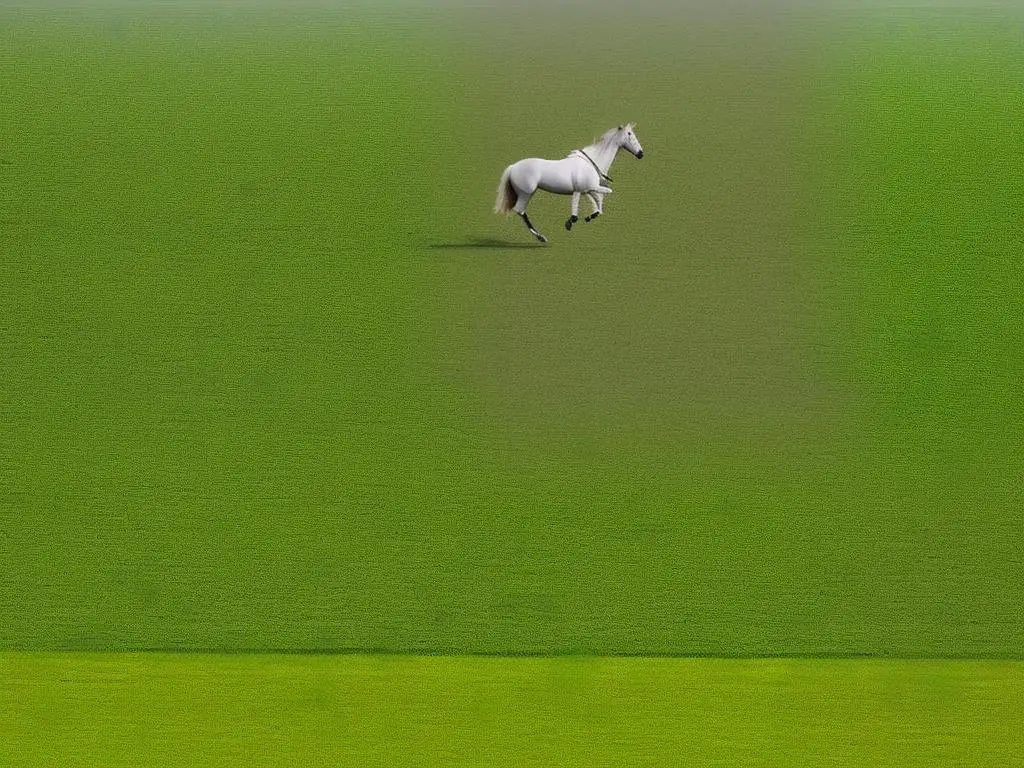
The Art of Dressage
The Art of Dressage
The art of dressage, derived from a French word that means “training,” involves intricate, predetermined sequences of movements performed by a horse in response to almost invisible signals from its rider. Dating back over two thousand years, dressage, especially with German Warmbloods, aims to refine the horse’s agility, alertness, strength, and coordination. Originally developed for military purposes, dressage was used by ancient Greeks to ready their horses for warfare. Though it has evolved into a competitive sport over the years, dressage continues to honor its foundational principles – promoting rapport, precision, and exceptional performance between horse and rider.
History of Dressage
The art of Dressage bears roots in the classical Greek horsemanship, developed by Xenophon, a 4th-century BC Athenian soldier. In the Renaissance era, dressage was further refined by European courts that regarded it as a symbol of prestige and nobility. Throughout the centuries, the Germans, synonymous with impeccable riding and training techniques, played a crucial part in shaping and popularizing the practice of modern dressage. German Warmblood horses, known for their prodigious athletic abilities, temperaments, and physical durability, are now among the most sought-after breeds for dressage.
Dressage Scoring and Rules
Dressage competitions are governed by rules set out by the International Federation for Equestrian Sports and the US Dressage Federation. A panel of judges scores each performance against a standardized criterion based on precision, steadiness, rhythm, and the horse’s willingness to perform. The metric of scoring varies from 0 (indicating no execution of the requested movement) to 10 (excellent execution). Penalties and disqualification are invoked for violations like the horse’s resistance, harsh handling by the rider, or the horse leaving the arena during the test.
Levels of Dressage
Dressage levels mirror the progression in the horse’s training, ranging from training level for rookies to Grand Prix for the experienced. The levels gradually introduce new movements and intensify their intricacy and frequency until the horse and rider reach the ultimate Grand Prix dressage, demonstrating perfect harmony and supreme athletic skill. German Warmblood horses, with their exceptional attributes, are often seen playing strong contenders at the apex of these competitions.
Horse and Rider Relationship
Arguably the most indispensable element of dressage is the relationship between the horse and rider. This involves trust, understanding, and mutual respect, created through consistent training and interaction. A successful dressage pairing boasts a sense of unity; the rider should be able to guide the horse without any visible aids, and the horse should follow willingly and eagerly. German Warmblood horses, renowned for their intelligence and willingness to collaborate with their riders, make spectacular partners in this elegant dance.
Understanding Dressage with German Warmblood Horses
Dressage reflects the unique harmony achieved between rider’s delicate guidance and the horse’s inherent agility and strength. This equilibrium, particularly evident when engaging in dressage with German Warmbloods, is truly a sight to savor. It’s important to note that the rider’s role surpasses just direction – it involves developing a bond that encourages the horse to express their superior skills with freedom and confidence. Similarly, a horse’s role involves more than obedience; it should also find fulfillment and strive for excellence in dressage.
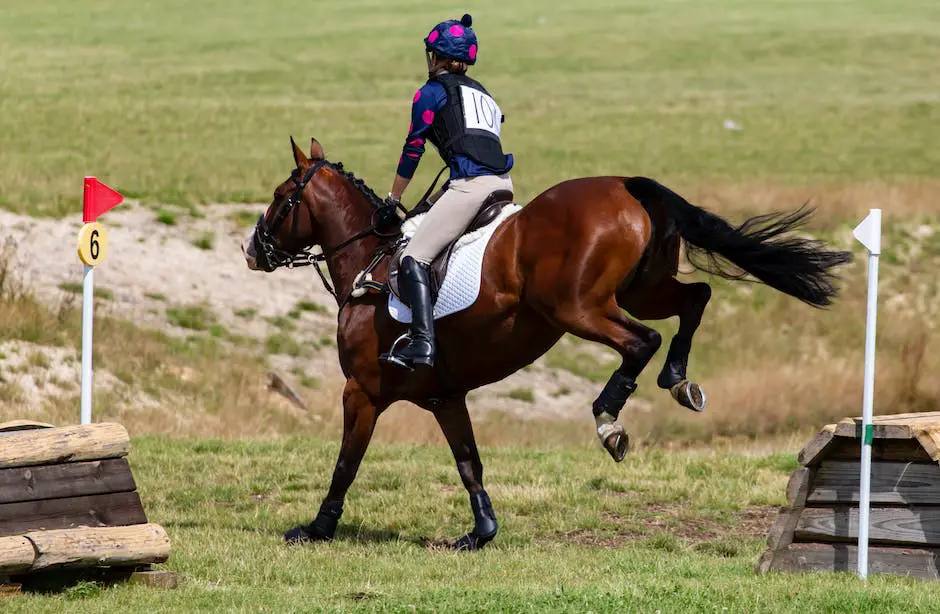
Training German Warmbloods for Dressage
The Process of Training German Warmbloods for Dressage
Training these beautiful German Warmbloods for dressage entails a regimen of rigorous conditioning, accurate communication, and an extensive understanding of the horse’s individual traits and abilities. The German Warmblood breed, with their show-stopping athleticism and dynamic movements, are the premier choice in competitive dressage globally due to their impressive performances.
Initial Groundwork and Desensitization
Before introducing dressage-specific maneuvers, young German Warmbloods are taught basic ground manners. This groundwork, which includes leading, tying, and being handled all over, forms the foundation of trust between horse and trainer. A considerable amount of time is spent on desensitizing these horses to various environmental stimuli that they might encounter in a show environment- loud noises, sudden movements, different surfaces, etc- to reduce their stress levels during actual performances.
Basic Movements and Gaits
Once a solid foundation of trust has been established, trainers begin to introduce basic dressage movements, starting with the horse’s natural gaits: walk, trot, and canter. The horse is taught to move with a collected and extended stride in each gait, maintaining a consistent and rhythmic movement. Flexibility and bending exercises are introduced gradually to improve suppleness and balance.
Progressive Training Techniques
As the horse becomes consistently comfortable at these three gaits, more sophisticated dressage movements are introduced in a progressive manner. This could include leg-yielding, shoulder-in, haunches-in, half-passes, flying changes, pirouettes, and piaffe. Different techniques such as lungeing, long lining, and in-hand work are utilized. A critical aspect of dressage training is maintaining the horse’s relaxation and willingness throughout these exercises.
Timeline for Training
Training German Warmbloods for dressage is a lengthy process, often taking many years. Horses generally begin their training around three years old, and by the age of seven or eight, they are typically able to compete in the highest levels of dressage, if properly trained. It should be noted that each German Warmblood is unique and progresses at their own pace.
Role of a Professional Trainer
One cannot underscore enough the importance of a professional dressage trainer in this process. They bring experience and a keen eye to help identify the horse’s strengths and weaknesses. They guide the horse and rider team through the rigors of training, providing consistent feedback and instruction. An exceptional trainer is, thus, instrumental in molding a successful German Warmblood dressage horse.
Challenges Faced During Training
While German Warmbloods are revered in the dressage world, training them does come with hurdles. Sometimes, their size and strength can make them more challenging to train, particularly in maintaining the finesse and elegance required in dressage. Overexertion, injury, and stress are other potential roadblocks. A balanced diet, proper veterinary care, and attentive horsekeeping practices are essential in overcoming these challenges and maintaining the horse’s health and well-being.
Overview
Training a German Warmblood in dressage involves a strategic, time-consuming process that relies heavily on foundation building, progression, patience, and appropriate guidance. Both the horse and trainer are called upon for their resilience, perseverance, and adaptability to undergo this process. Nevertheless, when properly trained, these elegant horses have the potential to elevate themselves as champions in the realm of dressage. With unwavering commitment, conscientiousness, and appropriate instruction, a German Warmblood can evolve into a graceful partner on the dressage court.
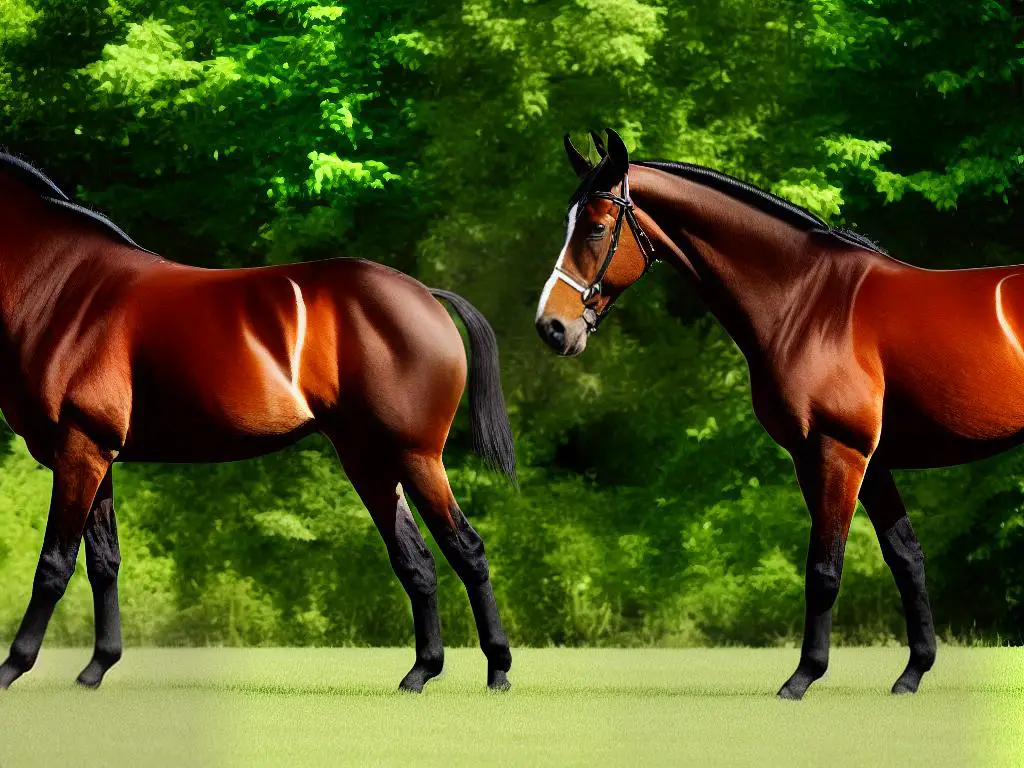
The Role of Equipment in Dressage
Dressage: The Quintessential Bond Between Horse and Rider
The term dressage originates from the French word that stands for “training,” and it portrays an artful form of horse riding showcased in exhibitions and competitions. The German warmblood is the suitable candidate for this discipline due to their unique mix of power, elegance, and mobility. Similar to an artist needing a perfect brush for a masterpiece, the success in dressage does not only lie in the rider’s expertise and horse’s features but also hinges on the selection of optimum dressage gear. This makes it essential to gain comprehensive knowledge about the variety, maintenance, and correct fitting of different dressage equipment such as saddles, bridles, bits, and protective elements, especially when it’s specific to German warmblood dressage horses.
Saddles: Essential for Rider Balance and Horse Comfort
Arguably, one of the most significant pieces of equipment for dressage is the saddle. Dressage saddles are designed to facilitate a correct dressage position due to their straight-cut flaps and deep seat, allowing greater contact with the horse. The deep seat gives the rider greater stability and better balance, aiding in the successful execution of various dressage moves. For German warmbloods, a saddle with an open seat, narrower twist and somewhat larger seat size is often recommended to accommodate the horse’s broad back and shoulder, and the rider’s upright position.
Bridles and Bits: Avenues of Communication
Bridles and bits work in synergy as a means of communication between the horse and rider. A correctly fitting bridles helps to comfortably secure the bit in the horse’s mouth, thereby facilitating optimal communication. For German Warmbloods participating in dressage, a double bridle, also known as a “Weymouth,” is often used. This bridle utilizes two bits – a curb bit and a bradoon. This arrangement maximizes the subtle, nuanced communication necessary for the precise movements of dressage.
Protective Gear: Ensuring Safety and Performance
Just like athletes, dressage horses need their protective gear too. Horse boots, such as brushing boots or dressage boots, are used to protect a horse’s legs from injuries. Similarly, bell boots shield the horse’s hooves and coronary band. While often optional in dressage, it’s vital to remember that a comfortable and safe horse will always perform better.
Maintenance and Proper Fitting of Equipment
Maintenance and proper fitting of dressage equipment should never be overlooked. Remember, ill-fitted equipment can cause discomfort, distress, and even injuries to the horse, while well-maintained and correctly fitted gear aids in superior performances. Regularly check equipment for signs of wear and tear and make sure the saddle and bridle fit the horse’s shape perfectly. As German Warmbloods are a larger breed, they often require equipment specifically designed to fit their build.
The Essential Role of Equipment in Dressage with German Warmbloods
When it comes to dressage with German Warmbloods, equipment plays a significant role. This isn’t just about the horse and rider but also about saddles, bridles, bits, and protective gear that all contribute to a successful dressage event. It’s essential to invest in quality equipment that is perfectly tailored to the needs of the German Warmblood. Not only does equipment need to be high-quality and well-fitted, but it also needs to be properly maintained to ensure optimum performance. Dressage is a journey, a partnership between horse and rider, and the right equipment acts as a facilitator.
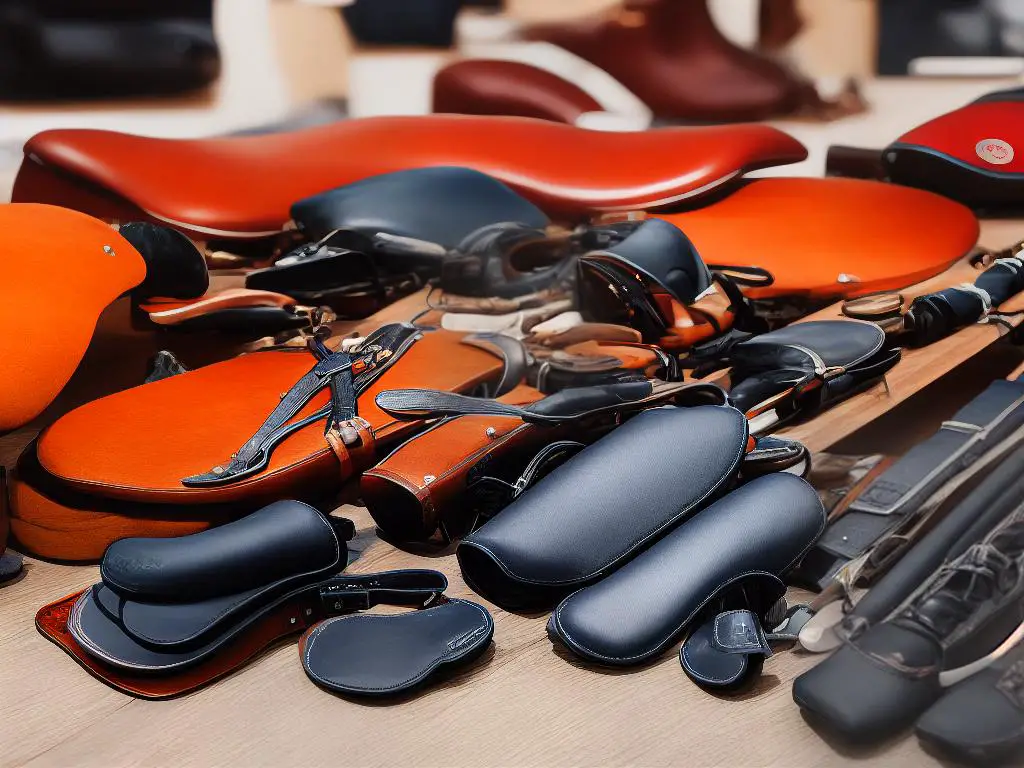
Prominent German Warmblood Dressage horses and their Achievements
The Intricate World of Dressage
Dressage stands as an epitome of horse training and riding, demanding an unparalleled connection and mutual understanding between the rider and the horse. Particularly, German warmbloods have frequently hit the spotlight in this arena due to their unique blend of strength, agility, and grace. These breeds have not only interacted with the world of dressage but have made substantial contributions and left impactful legacies. The article continues by exploring some of these notable horse breeds and their remarkable accomplishments in the dressage field.
Hallmoon Delphi
Starting with the outstanding mare Halfmoon Delphi, a Hannoverian breed, this dressage horse stunned the world with her precision and grace. She is known as the “Blue Horse,” due to her beautiful gray dappled coat. Under the partnership with British rider Michael Eilberg, Delphi won the team Silver medal at the 2014 World Equestrian Games in Normandy, France. Her success story was not limited to championships; she also finished tenth individually at the Olympic Games in London.
Rembrandt
On the list of German Warmblood dressage horses, Rembrandt easily finds a spot due to his impressive accolades. Born in 1980, this Westphalian gelding with his rider Nicole Uphoff became a sensation in the late ’80s and early ’90s. Together, they won four Olympic gold medals – two team and two individual. Also, they were double European Champions and double World Champions – a series of achievements that stamped their legacy in the dressage world.
Ahlerich
Ahlerich, an Oldenburg breed, was the embodiment of an ideal dressage horse. His partnership with the legendary rider Dr. Reiner Klimke constituted one of dressage’s most iconic partnerships. They won the individual Olympic gold medal in the Los Angeles Games of 1984 with an unforgettable and passionate Freestyle performance. Klimke managed to coax the characterful Ahlerich to dance to the Olympic Overture, creating a lasting memory in the world of dressage.
Totilas
No list of dressage horses would be complete without mentioning Totilas, a Dutch Warmblood who had a significant part of his career in Germany. Known affectionately as “Toto,”, this horse soared to superstardom under Dutch rider Edward Gal before making headlines with his sale to Germany. With Matthias Rath in the saddle, he won the team gold at the 2011 European Championships; thus, he became a dressage horse that won gold medals for two different countries.
Showtime FRH
The greatness of Showtime FRH must not go unmentioned. This Hanoverian gelding partnered with the professional Germany Olympic equestrian Dorothee Schneider and they claimed the team gold in the 2016 Olympic Games. Displaying impressive obedience and flexibility, the duo made a giant leap at the 2019 European Championships in Rotterdam, winning both the team gold and the Grand Prix Special’s individual silver medal.
The Legacy of German Warmblood Dressage Horses
German warmblood horses have made a significant impact on the sport of dressage. Horses like Hallmoon Delphi, Rembrandt, Ahlerich, Totilas, and Showtime FRH have demonstrated excellent physique, strength, agility, and above all, exemplary harmonization with their riders. Their achievements and legacies have left an indelible mark on the equestrian world, inspiring generations of dressage enthusiasts. Their phenomenal performances testify to the impressive capabilities of the German warmblood breeds and their extensive contribution to the arena of dressage.
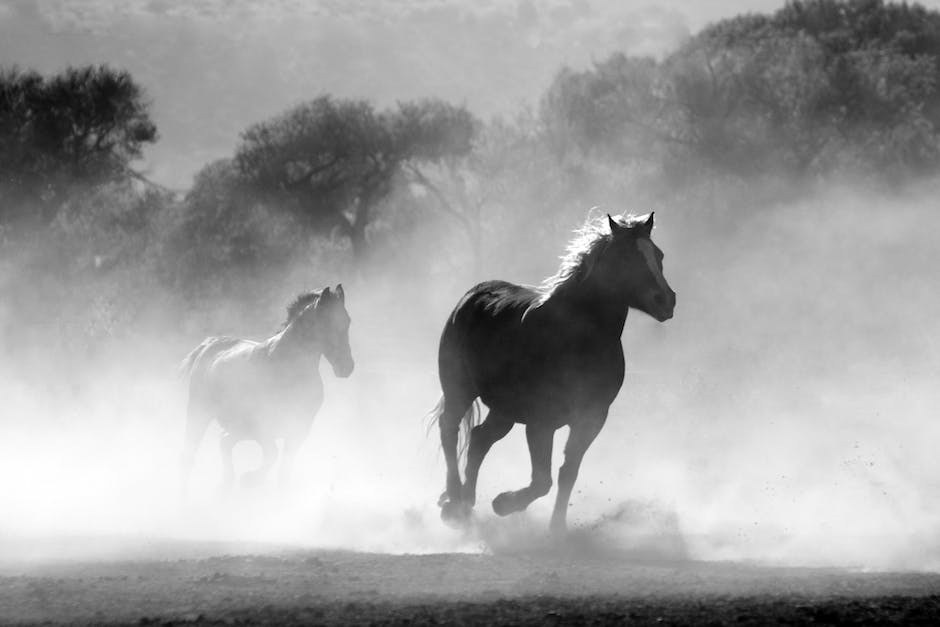
Through our explorative journey around the world of German Warmblood dressage horses, we have identified how the bedrock of this breed’s success lies in its distinctive physique, temperament, and aptitude for the intricate dance of dressage. We have been introduced to the art form of dressage, understanding its fundamentals, scoring, and different levels. Furthermore, we have stepped into the shoes of a dedicated horse trainer, wrestling with challenges and victories when training these glorious animals. We have also examined the role of appropriate equipment for optimal performance and safety. And finally, we have found inspiration in the stories of legendary German Warmbloods who have dazzled audiences and judges alike with their fantastic performances, leaving a timeless imprint on the field of dressage.
